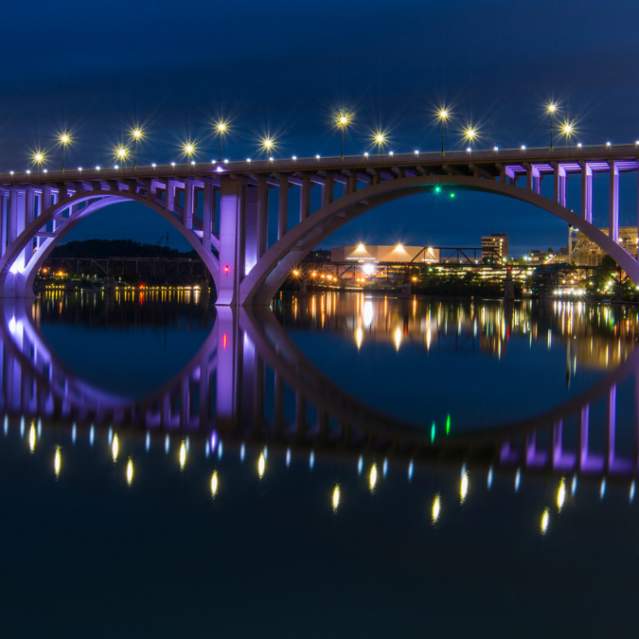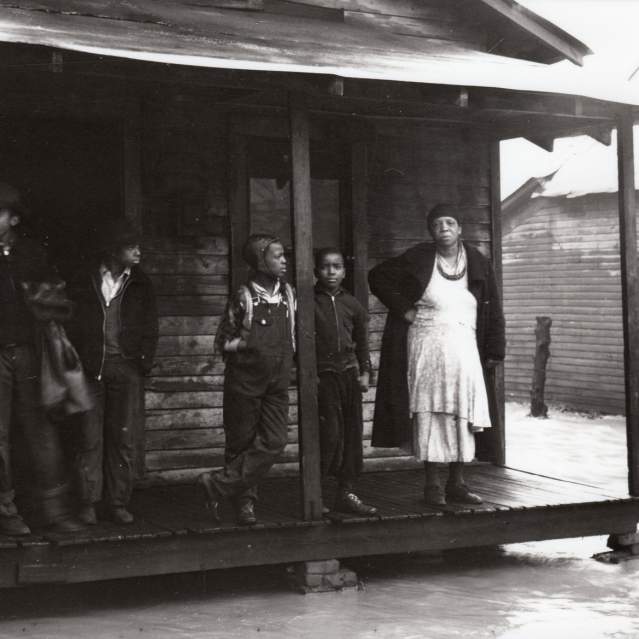Downtown Knoxville never fails to attract attention, with relatively narrow streets reflecting its 18th-century origins, a public square of unusual shape, and a variety of large buildings of different styles in brick and marble, most of them built before 1930. And most of it’s on top of a 60-foot river bluff. It’s a picturesque downtown, subtly unusual in its dimensions. Almost every minute of every day, you see people posing for photographs on Gay Street or Market Square or the Old City or World’s Fair Park.
Every city evolves differently, and the curious may well wonder how this one came to be. There are some answers in a new book, Downtown Knoxville, published this year by Arcadia Publishing in Charleston, S.C., as part of their Images of America series, and created by the nonprofit educational organization, the Knoxville History Project. (In full disclosure, I should mention that’s my company; my colleague Paul James, our director of publishing, took the lead in putting it together.)
It’s a 128-page paperback with about 200 images, of the familiar and the unfamiliar. Some photographs from a century ago are readily identifiable, showing streetscapes that don’t look all that different today, except for our casual fashions—but others, showing blocks of buildings that no longer exist, might seem pictures of another city.
There are pictures of crowded theaters, of forgotten parades, of the Civil War, of lost churches; buildings you can hardly believe existed, like the old Opera House, the grandiose Market Hall, the turreted Vendome apartment building, or the palatial Girls High School—but also old images of familiar buildings like Peter Kern’s bakery, the Arnstein Building, and the Tennessee Theatre.
Some of these photographs have been published before, and a few are famous, like a classic image of cowboy-era men standing formidably in the street in 1869; but many of the book’s images have never been seen until recently, even by historians. There’s an image of Great Smoky Mountains founders in the 1920s, posing on Gay Street for a movie camera, and a Depression-era photograph of a family watching helplessly as floodwaters swirl around their home, and blind musicians playing on the street, hoping for a stray nickel—and what may be the very last photograph of a livery stable in downtown Knoxville.
 Also included are some artists’ illustrations, including a newly discovered skyline drawing of the hilltop city in the 1850s, and a contemporary illustration—the first we’ve ever seen—of the bizarre Mabry-O’Conner gunfight of 1882, in which all three combatants were killed, an event nationally infamous partly thanks to Mark Twain.
Also included are some artists’ illustrations, including a newly discovered skyline drawing of the hilltop city in the 1850s, and a contemporary illustration—the first we’ve ever seen—of the bizarre Mabry-O’Conner gunfight of 1882, in which all three combatants were killed, an event nationally infamous partly thanks to Mark Twain.
The book brings Knoxville’s story into the modern era, with photograph of a 1960 Civil Rights march on a familiar intersection, images of the 1982 World’s Fair, and even the 21st century Big Ears festival. History keeps unfolding, so if you take a good photograph of downtown in 2022, don’t just delete it—before considering that historians of the future might find it as fascinating as we find these. There will probably be another book like this someday.
But for now, we have this one to look at. It’s fun to take it out into the streets, and see if you can tell where each photographer stood--and see how much things have changed.






